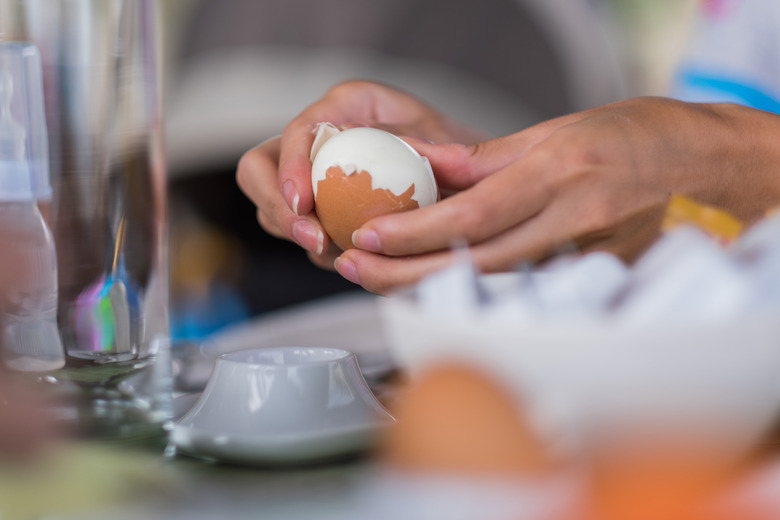Easy High School Physics Experiments
Physics may seem like an intimidating subject, but there are ways to make it fun. Not only is it the foundation for other sciences like chemistry and meteorology, it also explains so much about the world we live in. Physics explores the fundamental concepts of matter, energy, space and time, and the interactions between these properties. For high school students looking for simple experiments, light, static electricity and thermodynamics are great places to start.
TL;DR (Too Long; Didn't Read)
Shine a flashlight through water and milk to discover why the sky is blue but the sunset is red; use a comb to bend water with static electricity; and watch a hard-boiled egg get sucked into a bottle to see thermodynamics in action.
The Color of Light
The Color of Light
Ever wonder why the sky is blue, but the sunset is red? Use a flashlight, a transparent rectangular container, water and a cup of milk to find out why.
Fill the container three-quarters full of water and shine the flashlight into the side of the container. Observe the light from the opposite side and the end of the container. At most, a few white dust particles might be seen where the beam passes through.
Now stir 1/4 cup of milk into the water. Observe the light from the opposite side and the end of the container. From the other side, the light may seem blue, and from the end, the light may seem yellow. Note the width of the beam. Repeat until all of the milk is added. You'll notice after each addition that the blue darkens, the yellow turns to orange and the width of the beam increases.
So, why does the light appear two different colors, depending on the angle? Light travels in a straight line unless it encounters particulates that cause the beam to scatter. The more milk (which contains fat and protein particles) you add into the water, the more the light scatters, with the blue bending while the red and orange continue in more of a straight line. As for the sunset, because of the sun's path, the light has farther to travel at that time and encounters more dust particles in the atmosphere.
Static Electricity
Static Electricity
Static electricity can shock an unsuspecting person, and it can also move objects. Use a nylon comb and a faucet to watch static electricity bend water.
Turn the faucet on so that water 1/16 inch in diameter flows from the tap. Run the comb through hair a few times. Hold the comb 3 to 4 inches below the tap with the teeth of the comb an inch from the water stream. Note what happens. Move the comb closer and observe what happens. Run the comb through hair again and see if it changes the results. Try adjusting the water stream to see if it makes a difference. Finally, try different sized combs and repeat.
Combing hair creates static electricity. One object becomes negatively charged by gaining electrons, while the other object becomes positively charged by losing electrons. The stream of water moves toward the comb because electrons from the water are attracted to the charged comb. The combed hairs might also repel one another, since each strand holds the same charge, and like charges repel.
High and Low Pressures
High and Low Pressures
What does the weatherman mean by "high pressure" and "low pressure"? A hard-boiled egg, an old-fashioned glass milk bottle and some matches can help you find out.
Peel a cooled, hard-boiled egg. Simultaneously light three matches and drop them into an empty glass bottle. Quickly cover the opening with the egg. After the matches extinguish, watch the egg get sucked into the bottle.
The heat from the matches causes the air sealed in the bottle to expand. After the matches go out, the air cools and contracts. The pressure inside the bottle becomes lower than the pressure outside the bottle. As the pressure equalizes, the egg squeezes into the bottle.
Fascinating stuff! Enjoy these experiments, and hopefully these physics concepts become a little easier to digest.
Cite This Article
MLA
Jensen, Michele. "Easy High School Physics Experiments" sciencing.com, https://www.sciencing.com/easy-high-school-physics-experiments-6702224/. 24 April 2018.
APA
Jensen, Michele. (2018, April 24). Easy High School Physics Experiments. sciencing.com. Retrieved from https://www.sciencing.com/easy-high-school-physics-experiments-6702224/
Chicago
Jensen, Michele. Easy High School Physics Experiments last modified August 30, 2022. https://www.sciencing.com/easy-high-school-physics-experiments-6702224/
